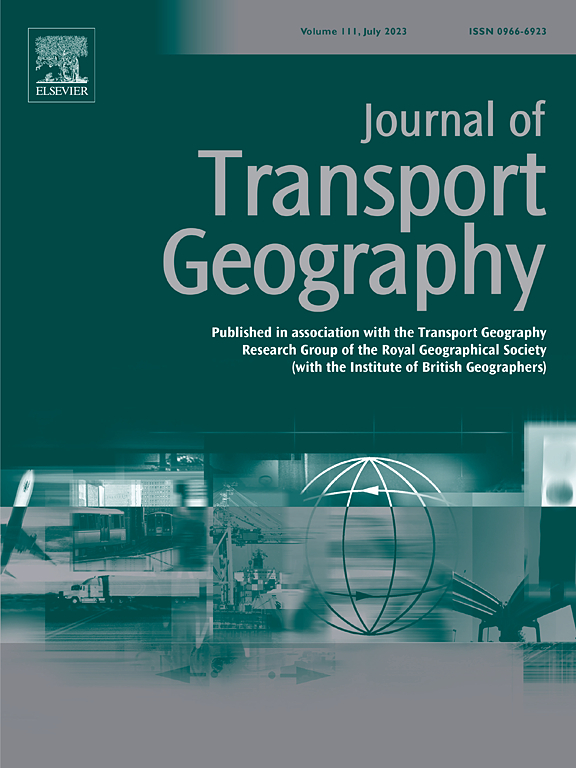为重新构思城市街道分类制定一套完整的方法
IF 6.3
2区 工程技术
Q1 ECONOMICS
引用次数: 0
摘要
街道分类在城市和交通规划中至关重要。传统的方法优先考虑汽车行驶,而最新的方法则强调步行、骑自行车和公共交通等可持续模式。然而,有关可持续街道分类的文献仍然有限。因此,本研究旨在开发一种方法,用于在可持续原则下重新制定和评估城市街道分类。本研究开发了四种不同城市中心和街道网络分类的情景:一种 "无 "情景和三种优先考虑可持续交通的逆向预测情景。该方法考虑了街道宽度、土地用途、当前分类、公共交通和自行车路线、街道连续性以及城市环境质量等因素。该方法采用了一个二维矩阵(街道重要性与交通方式优先级)来制定后向预测方案中的新街道类别,其中地理空间和网络分析起到了至关重要的作用。结果表明,在希腊雅典的卡利西亚(Kallithea),提出新城市中心和可读街道分类以及交通疏导区的方案更有效。此外,它们还为可持续交通创造了更好的条件。这种新颖的方法为政策制定者和规划者提供了宝贵的见解,同时也为有关可持续交通规划的科学讨论做出了贡献。本文章由计算机程序翻译,如有差异,请以英文原文为准。
Development of a complete method for re-conceptualizing street classification in an urban municipality
Street classification is crucial in urban and transportation planning. Conventional approaches prioritize car movement, while recent ones emphasize sustainable modes like walking, cycling, and public transport. However, the literature on sustainable street classification remains limited. Hence, this study aims to develop a method for reformulating and evaluating street classification in an urban municipality under sustainability principles.
Four scenarios with varying urban centers and street network classifications are developed: a “do-nothing” scenario and three backcasting scenarios prioritizing sustainable mobility. The method considers factors such as street width, land uses, current classification, public transport and cycling routes, street continuity, and the quality of the urban environment. A two-dimensional matrix (street significance vs. mode priority) is employed to develop new street categories in the backcasting scenarios, with geospatial and network analysis playing a crucial role. These scenarios are then evaluated using multicriteria analysis (REGIME method), incorporating various urban and transportation criteria.
Applied to Kallithea in Athens, Greece, the results show that scenarios proposing new urban centers and readable street classification with traffic calming zones are more efficient. Additionally, they cultivate better conditions for sustainable transportation. This novel method provides valuable insights for policymakers and planners, while contributing to the scientific debate on sustainable mobility planning.
求助全文
通过发布文献求助,成功后即可免费获取论文全文。
去求助
来源期刊

Journal of Transport Geography
Multiple-
CiteScore
11.50
自引率
11.50%
发文量
197
期刊介绍:
A major resurgence has occurred in transport geography in the wake of political and policy changes, huge transport infrastructure projects and responses to urban traffic congestion. The Journal of Transport Geography provides a central focus for developments in this rapidly expanding sub-discipline.
 求助内容:
求助内容: 应助结果提醒方式:
应助结果提醒方式:


